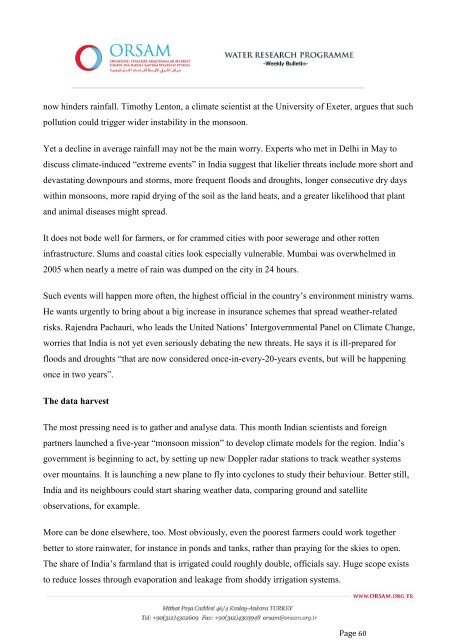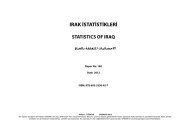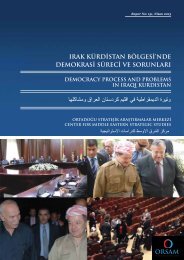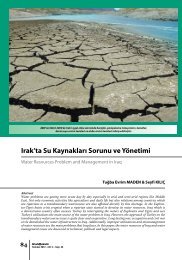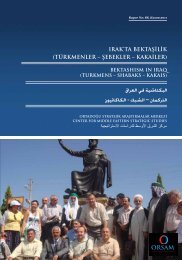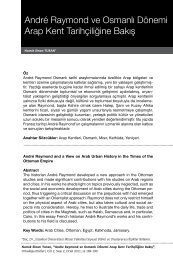30 July - 5 August 2012 - orsam
30 July - 5 August 2012 - orsam
30 July - 5 August 2012 - orsam
You also want an ePaper? Increase the reach of your titles
YUMPU automatically turns print PDFs into web optimized ePapers that Google loves.
now hinders rainfall. Timothy Lenton, a climate scientist at the University of Exeter, argues that such<br />
pollution could trigger wider instability in the monsoon.<br />
Yet a decline in average rainfall may not be the main worry. Experts who met in Delhi in May to<br />
discuss climate-induced ―extreme events‖ in India suggest that likelier threats include more short and<br />
devastating downpours and storms, more frequent floods and droughts, longer consecutive dry days<br />
within monsoons, more rapid drying of the soil as the land heats, and a greater likelihood that plant<br />
and animal diseases might spread.<br />
It does not bode well for farmers, or for crammed cities with poor sewerage and other rotten<br />
infrastructure. Slums and coastal cities look especially vulnerable. Mumbai was overwhelmed in<br />
2005 when nearly a metre of rain was dumped on the city in 24 hours.<br />
Such events will happen more often, the highest official in the country‘s environment ministry warns.<br />
He wants urgently to bring about a big increase in insurance schemes that spread weather-related<br />
risks. Rajendra Pachauri, who leads the United Nations‘ Intergovernmental Panel on Climate Change,<br />
worries that India is not yet even seriously debating the new threats. He says it is ill-prepared for<br />
floods and droughts ―that are now considered once-in-every-20-years events, but will be happening<br />
once in two years‖.<br />
The data harvest<br />
The most pressing need is to gather and analyse data. This month Indian scientists and foreign<br />
partners launched a five-year ―monsoon mission‖ to develop climate models for the region. India‘s<br />
government is beginning to act, by setting up new Doppler radar stations to track weather systems<br />
over mountains. It is launching a new plane to fly into cyclones to study their behaviour. Better still,<br />
India and its neighbours could start sharing weather data, comparing ground and satellite<br />
observations, for example.<br />
More can be done elsewhere, too. Most obviously, even the poorest farmers could work together<br />
better to store rainwater, for instance in ponds and tanks, rather than praying for the skies to open.<br />
The share of India‘s farmland that is irrigated could roughly double, officials say. Huge scope exists<br />
to reduce losses through evaporation and leakage from shoddy irrigation systems.<br />
Page 60


